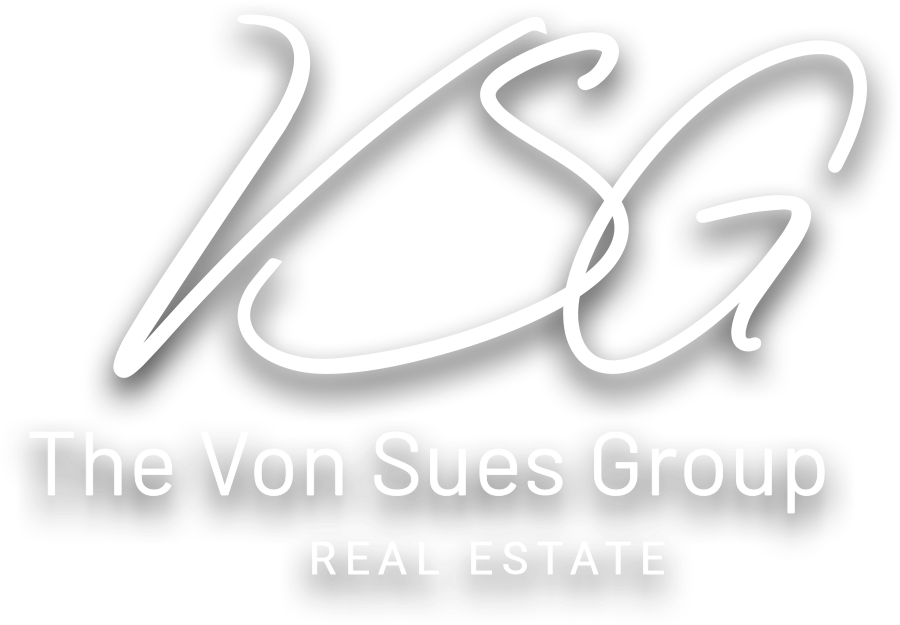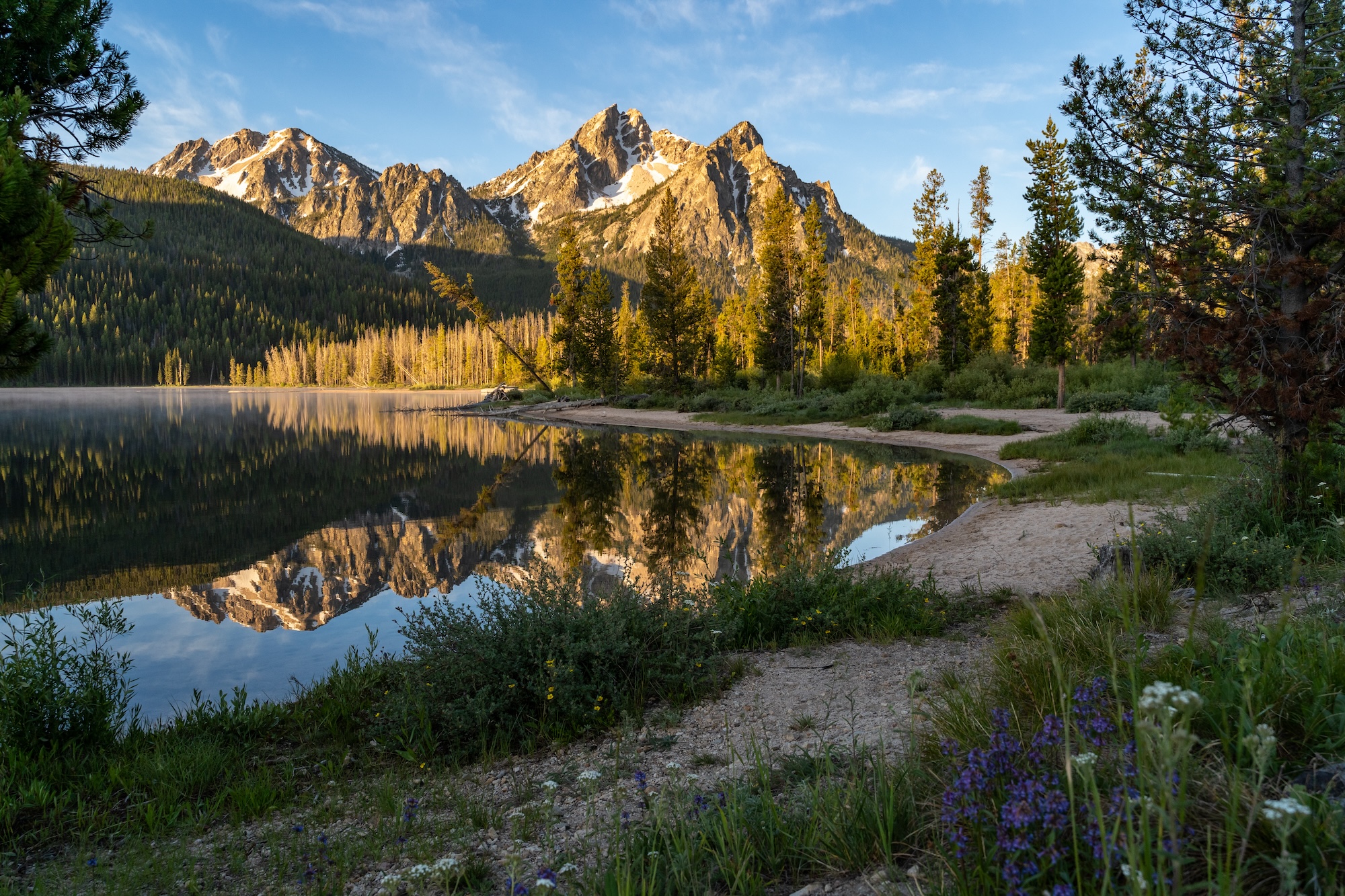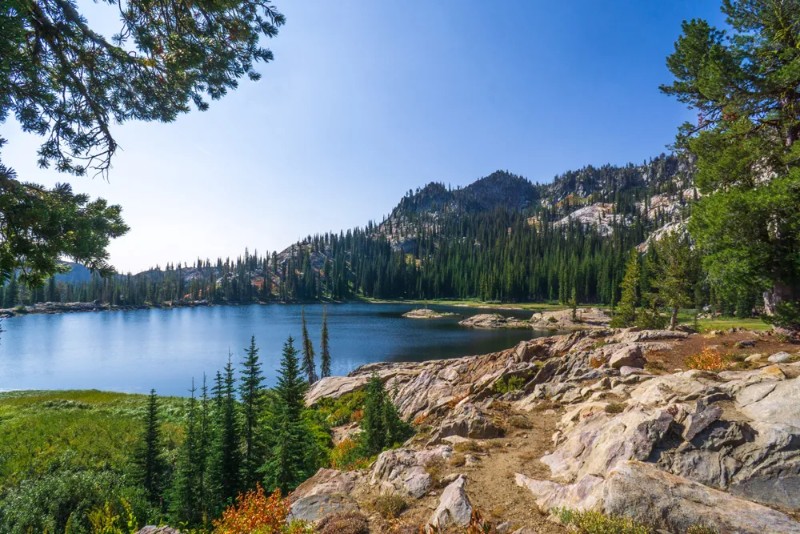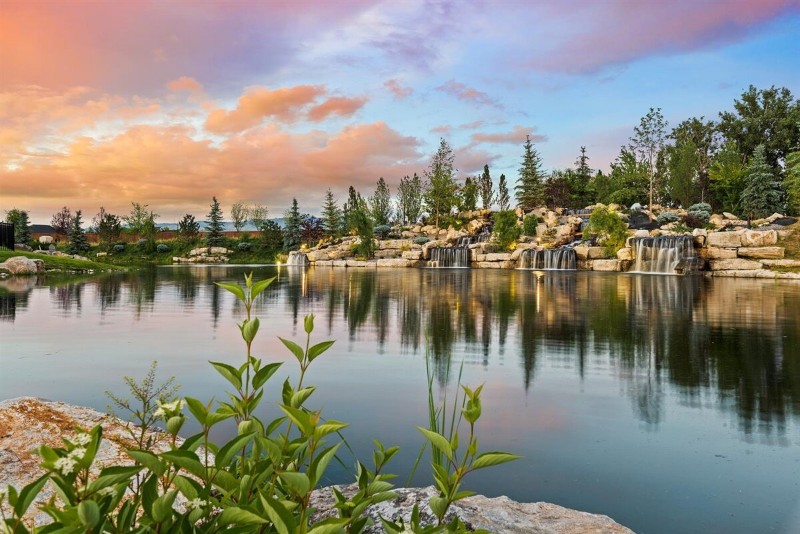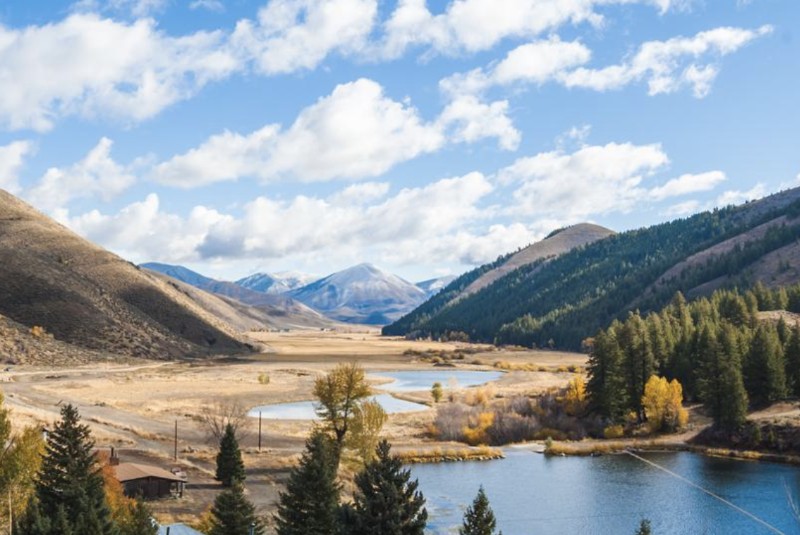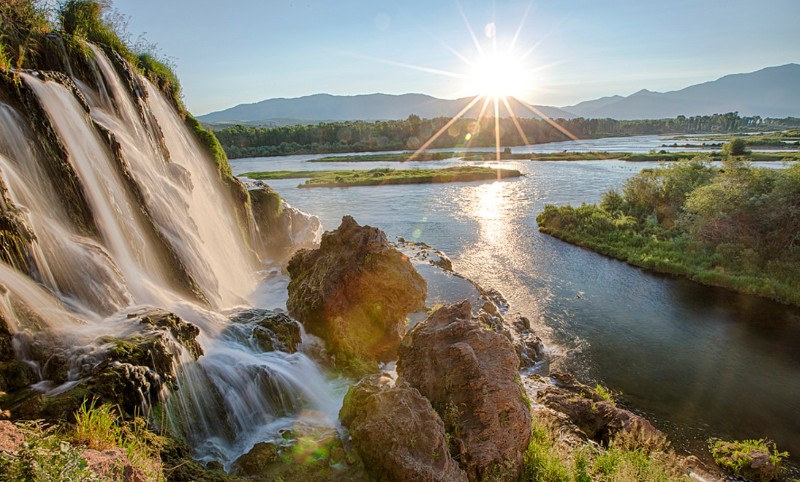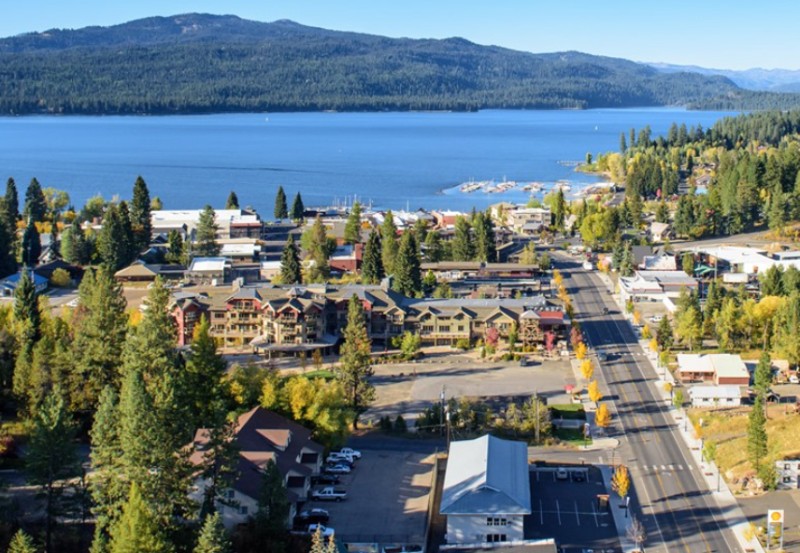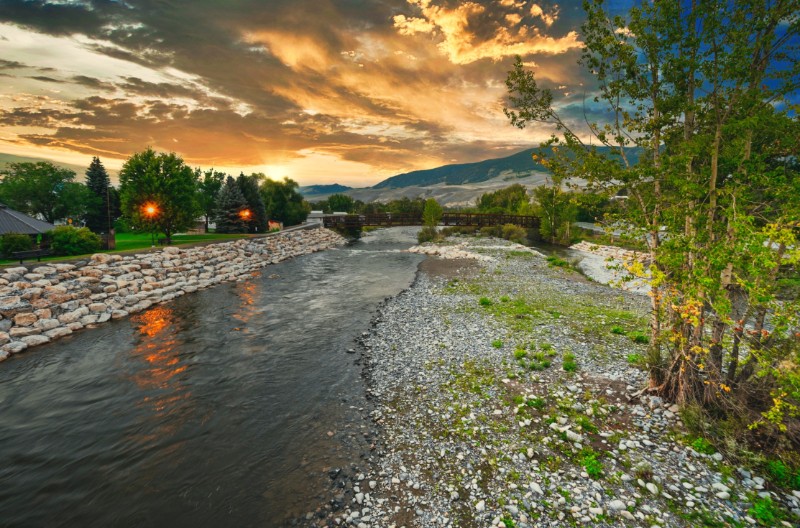Main Content
Featured Listings
Idaho real estate
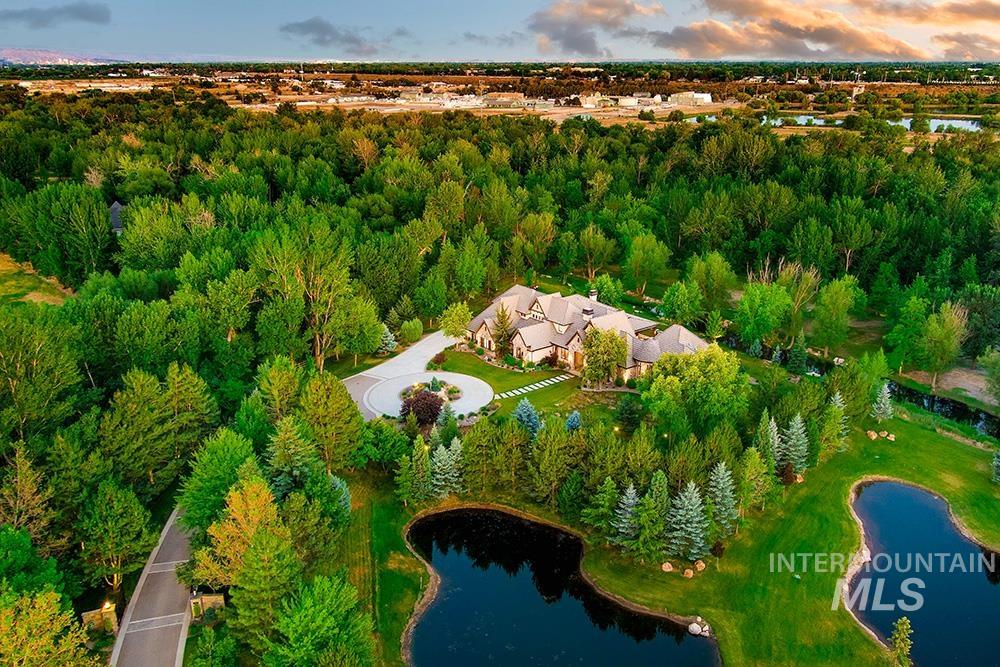
Many Idaho properties for sale include acreage, mature trees, and water features, especially in rural or higher-end areas.
Framed by rugged mountains, winding rivers, and vast open skies, Idaho is a place where the great outdoors is more than a backdrop—it’s a way of life. Here, adventure feels natural and accessible, and every season brings a new reason to explore, unwind, and reconnect with the land.
Idaho is a state shaped by its Western frontier heritage, keeping alive its independent, pioneering spirit and a culture rooted in resilience, hospitality, and a deep respect for nature and tradition.
For those considering a move, the Gem State offers something increasingly rare: a balance of affordability, quality of life, and long-term value. Idaho real estate isn’t just a cheaper alternative to the West Coast. It’s shaped by terrain, infrastructure, and the pace of each community. Some towns move fast, while others reward patience. The best opportunities depend on what you want, how you plan to use the property, and what living in Idaho means to you.
Table of Contents:
GET TO KNOW IDAHO
To get a clear picture of what Idaho real estate looks like, you need to understand the land: how it’s laid out, how people move through it, and how that affects what gets built and where.
Where Idaho is and the lay of the land
Idaho sits in the northwestern U.S., bordered by Washington, Oregon, Nevada, Utah, Montana, Wyoming, and a short stretch of British Columbia. Its tall, narrow shape makes for dramatic shifts in landscape and climate from north to south.
Most of the population lives in the southern half, centered around Boise and the I-84 corridor. Northern Idaho, also known as the Panhandle, is a more remote region characterized by thick forests, alpine lakes, and fewer towns spread across longer distances.
Central Idaho is shaped by mountain ranges like the Sawtooths and Bitterroots, while the Snake River Plain in the south cuts through farmland and high desert.
A storied past and a vibrant present
Idaho’s history is rooted in rugged independence and natural abundance. Originally inhabited by Native American tribes such as the Nez Perce, Shoshone, and Coeur d’Alene, the region later drew fur traders and explorers in the early 1800s. The Oregon Trail brought settlers westward, and by the mid-1800s, gold discoveries spurred a rush of prospectors. Idaho became a U.S. territory in 1863 and gained statehood in 1890.
Today, Idaho’s frontier heritage, strong communities, and unspoiled landscapes continue to shape its identity as a place of resilience and opportunity. It ranks among the fastest growing economies in the country, with key industries like tourism, agriculture, and technology driving the surge. Each year, the state attracts thousands of new residents and visitors, drawn to its natural beauty, rich culture, and exciting possibilities.
Fast facts and key cities
Idaho real estate stretches across a state with fewer than two million people, most of whom live outside the major metro areas in small towns, rural communities, or destination markets that attract second-home buyers and long-term investors. Each key city in Idaho plays a very different role in the real estate landscape:
- Boise: The state capital offers an urban, economically active hub with a growing tech sector, strong job market, and high demand from out-of-state buyers looking for space and outdoor access.
- Meridian: This fast-growing suburb west of Boise features newer housing, strong schools, and a family-friendly, suburban feel.
- Coeur d’Alene: This scenic lakefront city in northern Idaho is known for outdoor recreation, an expanding luxury market, and its proximity to Spokane.
- McCall: This small resort town offers a walkable downtown, direct ski access, and high demand for second homes near Payette Lake.
- Sun Valley / Ketchum: This high-end resort area combines mountain access, a strong arts and culture presence, and a slower pace that appeals to lifestyle-driven buyers.
- Salmon: This remote town along the Salmon River offers large parcels, access to public land, and strong potential for off-grid living or homesteading.
IDAHO’S REAL ESTATE MARKET
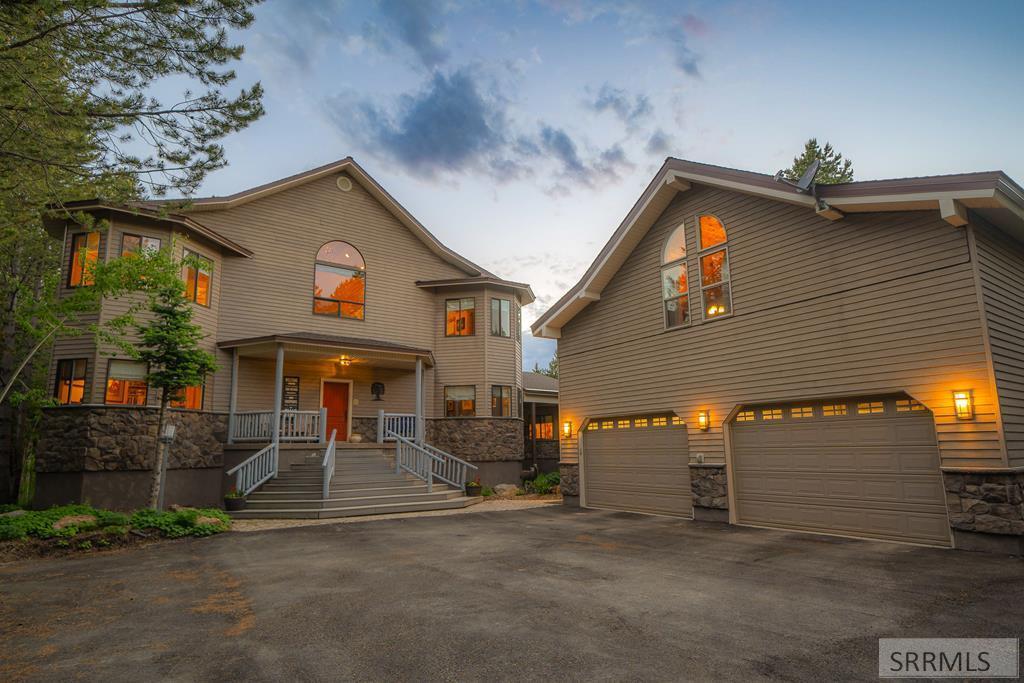
Homes like this reflect common features in Idaho real estate, including larger lots, multi-car garages, and wooded surroundings.
Geography, land use, and local regulation all shape what’s available and how homes are bought and sold. Because statewide trends won’t tell you much, you have to look at what’s happening on the ground in each region.
Types of homes available
The types of homes for sale in Idaho vary significantly by region:
- Single-family homes: These are most common in and around Boise, especially in planned subdivisions with modern construction, smaller lots, and proximity to schools and retail.
- Suburban new builds: Meridian and Eagle feature newer homes with larger footprints and suburban layouts, popular with families and commuters.
- Condos and vacation homes: Resort markets like McCall, Sun Valley, and Coeur d’Alene offer a mix of condos, ski cabins, and luxury second homes, many with views and rental potential.
- Ranches and homesteads: Rural areas open up access to working land, including horse properties, irrigated farmland, and homesteads with outbuildings.
- Off-grid and flexible-use properties: In counties with fewer zoning restrictions, buyers will find RV-friendly lots, multi-structure parcels, and remote homes with private wells, septic systems, or solar setups.
Popular architectural styles across the state
Architecture in Idaho varies by region and reflects the state’s mix of rural, resort, and suburban markets:
- Log and timber-frame homes: These are common in mountainous or wooded areas like McCall, Ketchum, and Sandpoint, often featuring pitched roofs, exposed beams, and natural materials suited to the environment.
- Mountain modern designs: A newer trend in resort markets, these homes combine steel, wood, and glass to frame beautiful mountain views and create open, high-ceiling interiors.
- Modern farmhouse and traditional ranch: These styles dominate new construction in suburban areas like Meridian, Eagle, and outer Boise, typically offering open floor plans, neutral finishes, and attached garages.
- Craftsman and mid-century homes: Found mostly in older neighborhoods near downtown Boise and in small-town cores, these homes often feature brick or wood siding, mature trees, and more variation in lot layout.
- Transitional and contemporary builds: Increasingly popular in infill developments and luxury Idaho properties for sale, these designs favor clean lines, minimal ornamentation, and high-efficiency materials.
Common amenities of Idaho real estate
The comforts and conveniences found in Idaho homes make the most of the state’s rural layout, recreational lifestyle, and mix of old and new construction. With the market’s diversity, what’s standard in one region might be rare in another:
- Acreage and outbuildings: Many homes outside city limits include several acres, detached garages, barns, or shops built for storage, equipment, or livestock use.
- Private wells and septic systems: These are common in rural areas and smaller towns where municipal utilities aren’t available.
- RV parking and hookups: Larger lots often include space and connections for RVs, trailers, or guest campers.
- Equestrian and ranch facilities: Properties in agricultural zones may feature fencing, corrals, shelters, and grazing land for horses or livestock.
- Recreation-focused storage: Oversized garages, gear rooms, and heated driveways are common in resort areas where outdoor equipment is part of daily life.
- Energy-efficient systems: Newer homes may include solar panels, radiant heating, tankless water heaters, and upgraded insulation for better year-round performance.
- Short-term rental features: In vacation markets, homes may include private entrances, lock-off suites, and durable finishes designed for guest turnover.
What buyers should know about the market
The Idaho real estate market is dynamic and diverse, propelled by the increasing demand for lifestyle properties and the state’s booming economy. People move here for a variety of reasons, from a change of scenery to job and economic opportunities, and the real estate market caters to these changing needs and preferences.
- In the Boise area, steady population growth has shifted the focus to new construction and suburban expansion, with prices stabilizing after a period of rapid acceleration.
- In resort markets, buyers compete for homes near lakes or ski terrain, and inventory tends to tighten during peak travel seasons. These markets also see more investor activity, especially in areas with short-term rental potential.
- In rural counties, lower price points are common, but transaction timelines are slower and zoning rules can vary significantly from one area to the next. Access, permitting, and financing requirements often depend on local infrastructure and county regulations, which makes it important to understand how the process works region by region.
LIVING IN IDAHO
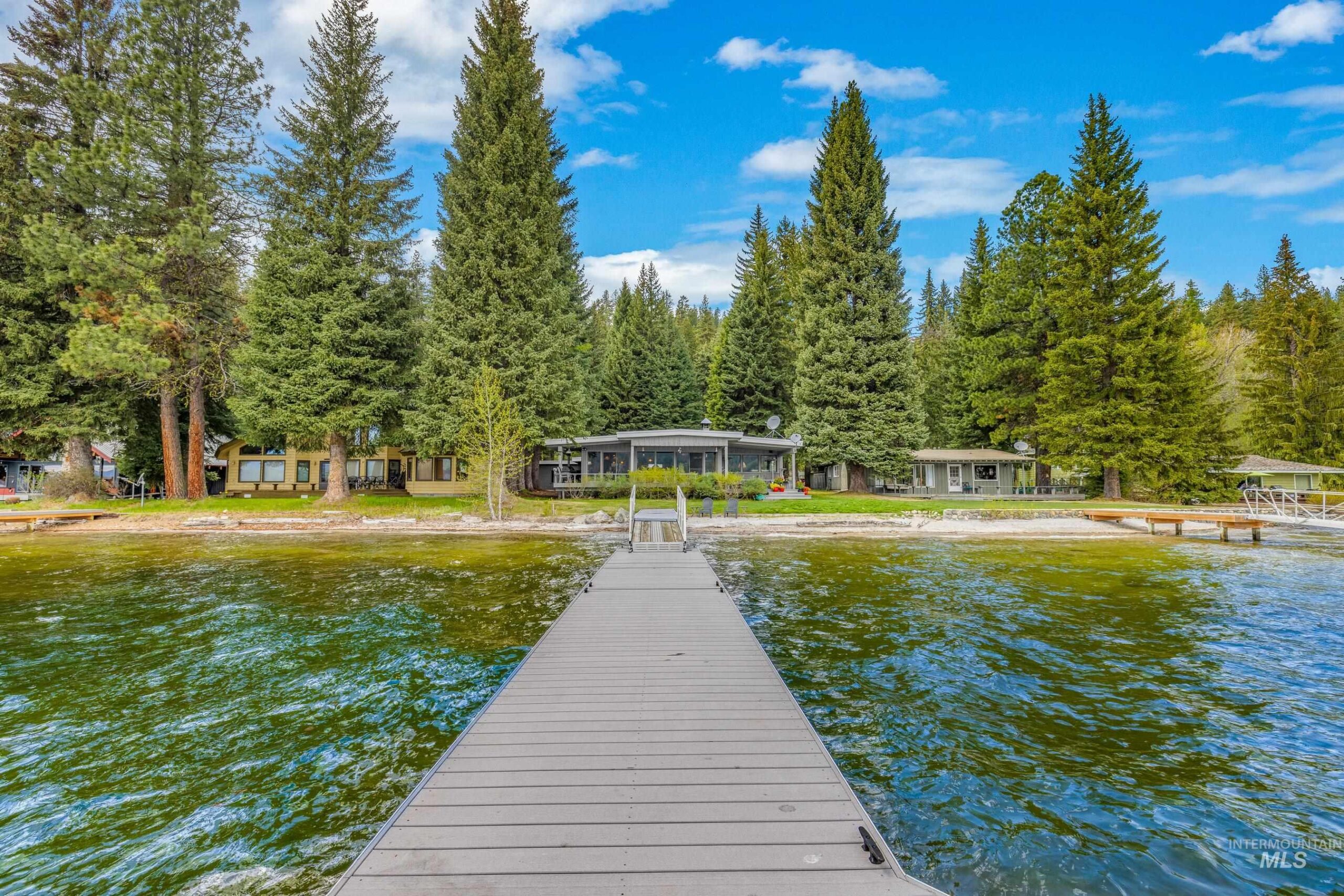
Lake access and forested settings like this are part of daily life in many Idaho communities.
Living in Idaho looks different depending on where you are. Urban areas offer established infrastructure, planned communities, and access to jobs and services. Rural towns offer space, fewer restrictions, and an irresistible invitation for off-the-grid living.
What most places have in common are a focus on outdoor access, low population and density, and a slower pace of life. Understanding the trade-offs in cost, access, and community helps narrow down where you’ll be most comfortable.
Cost of living
The cost of living here is generally lower than what you’ll find in most western states, though it varies by region. Idaho real estate tends to be most expensive in and around Boise and in resort areas like McCall and Sun Valley. Smaller towns and rural counties offer lower prices but may come with fewer services or longer drive times.
Property taxes are modest compared to many other states, and day-to-day expenses like groceries, utilities, and transportation are relatively stable. In rural areas, some goods and services may cost more due to distance and limited supply, but overall, many buyers relocating from out of state find that their money goes further in Idaho.
Schools
Idaho’s education options reflect the size and priorities of each community. Here’s how the landscape breaks down for families and education-focused buyers:
- Public schools in metro areas: Boise School District and West Ada School District (serving Meridian and parts of Eagle) are two of the largest in the state, offering comprehensive academic programs, AP coursework, and a wide range of extracurriculars.
- Charter and alternative programs: Areas like Boise and Coeur d’Alene include charter options such as Sage International School and Coeur d’Alene Charter Academy, along with STEM-focused and language immersion tracks.
- Smaller-town school districts: McCall-Donnelly and Blaine County (Sun Valley area) are known for smaller class sizes, strong local support, and outdoor integration in their programming. They often incorporate skiing, environmental science, or seasonal field-based learning into the school year.
- Higher education access: Idaho is home to Boise State University, the University of Idaho (in Moscow), and Idaho State University (in Pocatello), along with regional community colleges such as the College of Western Idaho and North Idaho College.
Getting around
Idaho’s transportation infrastructure is built around road access and regional airports. Here’s how mobility works across the state:
- Driving is the default: Most areas rely on personal vehicles, with limited transportation outside of Boise.
- The airport is the main hub: The Boise Airport offers direct service to several major U.S. cities and handles most of the state’s commercial air traffic.
- Regional airports support rural access: Smaller airports in Idaho Falls, Twin Falls, Lewiston, McCall, and Hailey offer regional flights or small charter service.
- Key highways connect the state: Interstate 84 runs through southern Idaho, and U.S. Highway 95 connects the northern and southern regions.
- Winter travel adds complexity: In rural areas, well-maintained highways still face seasonal closures, snowpack, and longer travel times due to weather, not traffic.
Shops, restaurants, and entertainment
In cities like Boise, Meridian, and Coeur d’Alene, you’ll find a mix of national retailers, local shops, restaurant districts, live music venues, and galleries. Community events such as farmers markets, food truck nights, and city-sponsored activities support local businesses and foster strong connections.
In smaller towns, commercial districts are more compact but often well-supported and community-driven. Places like McCall, Driggs, and Sandpoint offer walkable downtowns with independent restaurants, bakeries, boutiques, and essential services that serve both full-time residents and seasonal visitors.
Entertainment typically reflects the local lifestyle. In outdoor-focused towns, recreation often replaces nightlife. Cultural events like film festivals, concerts, or gallery openings tend to center around resort areas or college towns.
Outdoor recreation
With over 4 million acres of national forest, countless lakes and rivers, vast public lands, and protected wilderness, Idaho is a true haven for outdoor enthusiasts. offers year-round access to public land and natural features across the state.
- Trail networks connect to towns: Many communities have nearby access to maintained hiking and biking trails, especially around Boise, Coeur d’Alene, and McCall.
- Hunting and fishing are widely available: Public land and waterways support licensed hunting and fishing across large portions of the state.
- Ski areas span north to south: Sun Valley, Schweitzer, Brundage, and Bogus Basin are the major downhill resorts, with additional Nordic and backcountry access in mountain regions.
- Lakes support summer use: Coeur d’Alene, Payette, Priest, and Redfish lakes draw boaters, swimmers, and paddlers during warmer months.
- Rivers offer rafting and jet boating: The Snake, Salmon, and Payette rivers support guided tours and self-run routes through forest and canyon zones.
- Recreation is part of property value: The type of activities buyers are interested in, such as skiing, fishing, hunting, or hiking, directly affects their preference for land location and access.
Events and festivals
The state hosts a wide range of public events throughout the year, from large regional festivals to small-town traditions. Here are some of the most established and widely attended Idaho events across the state:
- Treefort Music Fest: Held in downtown Boise, this multi-day event features indie music, local art, tech panels, and community programming spread across multiple venues.
- Western Idaho Fair: This long-running Boise tradition combines livestock shows, carnival rides, food vendors, and regional competitions in a large fairground setting.
- Spirit of Boise Balloon Classic: This free, family-oriented event takes place annually in Ann Morrison Park and features morning balloon launches, night glows, and tethered rides.
- Art on the Green: Located in Coeur d’Alene, this lakefront festival highlights regional artists, live music, food stands, and community performances.
- Sun Valley Film Festival: This nationally recognized event attracts filmmakers and industry professionals for screenings, panels, and networking events in and around Ketchum.
- Seasonal festivals and traditional Idaho events in smaller towns: Communities like McCall, Driggs, and Salmon host winter carnivals, farmers markets, rodeos, and harvest festivals that reflect local culture and outdoor traditions.
Other attractions
Idaho offers a range of non-recreational attractions that reflect its history, geography, and local culture. Here are a few that stand out:
- Cultural sites in Boise: The Idaho State Museum, Old Idaho Penitentiary, Boise Art Museum, and Morrison Center offer rotating exhibits, performances, and a look at regional history.
- Scenic byways and backroads: Drives like the Sawtooth Scenic Byway and Elk River Backcountry Byway connect visitors to lesser-known parts of the state with views, trail access, and quiet pull-offs.
- Natural landmarks and day trips: Sites like Shoshone Falls and the Snake River Canyon offer dramatic landscapes and are popular for day visits and photo stops.
- Hot springs across the state: Idaho has both developed and undeveloped hot springs, with remote options in central Idaho and resort-style springs in places like Lowman, Stanley, and Cascade.
- Wine regions in the southwest: The Sunnyslope Wine Trail near Caldwell is home to a growing number of vineyards and tasting rooms that host seasonal events and weekend traffic.
YOUR NEXT STEP IN IDAHO REAL ESTATE
Buying a property in Idaho involves more than finding the right home. Local zoning, land use, market timing, and lifestyle all play a role in long-term value. The Von Sues Group helps buyers understand these details clearly so they can make the right decisions.
With over a decade of experience across Idaho, Montana, and Texas, this family-owned brokerage boasts backgrounds in law, construction, design, and finance, equipping the team with the skills needed in all steps of the buying and selling process, from contract reviews to negotiations. You can enjoy peace of mind knowing you’re working with licensed Idaho Realtors who provide expert guidance from first showing to closing
Explore beautiful homes for sale in Idaho with The Von Sues Group. Call 817.366.1659 or send them an email to get started.
Meet Our Team
At The Von Sues Group, we are committed to providing you with the highest quality service and utmost professionalism. Making the move to buy or sell your home can be one of life’s biggest decisions, and we use our years of experience to help make that process as seamless as possible.
Our family-owned and operated business is here to bring next-level care to your next real estate transaction. With over 700 successful transactions in the last decade, we have helped thousands discover The Von Sues Group difference!

